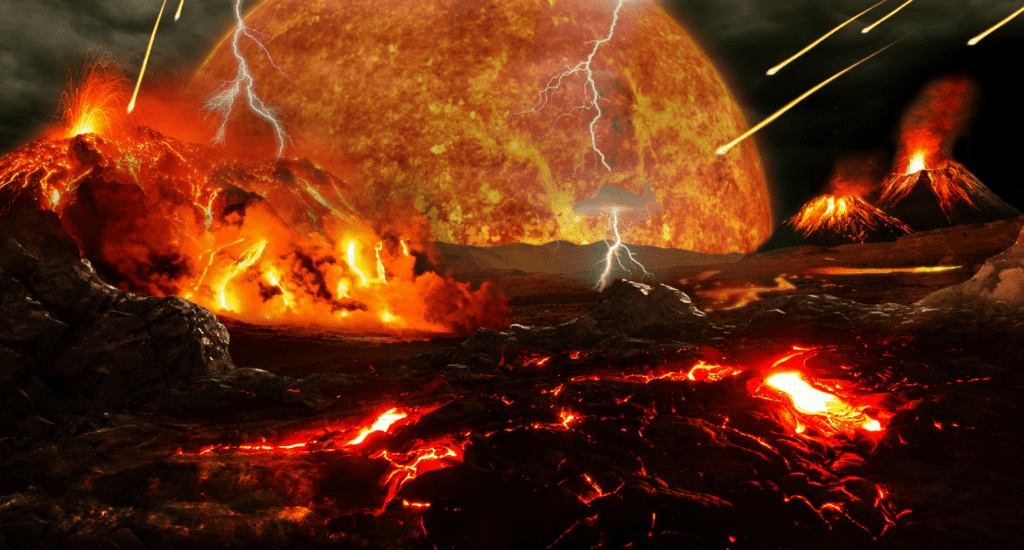
If you’d travel back in time four billion years ago, you would surely be shocked by what you’d see around you — through the visor of a life-support suit you’d need to survive.
Instead of peaceful blue skies and an oxygen-rich atmosphere, the Earth is covered in a haze of noxious fumes, seas of lava, and a never-ending onslaught of asteroid and meteorite impacts. Welcome to the Hadean Earth!
Fittingly, this geological era was named after Hades, the Greek god of the underworld, and also the Hebrew word for hell. Perhaps the most chilling realization is that there are no lifeforms to speak of, not even the tiny microscopic bacteria.
Is this truly hell?
Well, almost. In a puddle of bubbling liquid nearby, inconspicuous amino acids are assembling into proteins, which will eventually give rise to the first single-celled organisms. But where did these amino acids come from?
The origin of life is perhaps the most debated existential question out there, known for giving scientists and philosophers angst and headaches for centuries. Today, the consensus seems to be that the emergence of amino acids can be pinned down to either endogenous formation or extraterrestrial delivery via meteorites.
It this latter scenario that Japanese researchers at Tohoku University, National Institute for Materials Science (NIMS), the Center for High Pressure Science & Technology Advanced Research (HPSTAR), and Osaka University have explored by simulating the chemical reactions involved when a meteorite crashes into the ocean.

Using a complex experimental setup that employed more carbon dioxide and nitrogen in order to mimic the Hadean atmosphere, the researchers fired a single stage propellant gun to simulate the impact of an iron-rich meteorite.
Strikingly, these environmental conditions and the force of impact triggered chemical reactions that led to the formation of amino acids such as glycine and alanine, the main building blocks of proteins.
“Making organic molecules form reduced compounds like methane and ammonia are not difficult, but they are regarded as minor components in the atmosphere at that time,” Yoshihiro Furukawa, a researcher at Tohoku University and the corresponding author of the new study, said in a statement.
“The finding of amino acid formation from carbon dioxide and molecular nitrogen demonstrates the importance in making life’s building blocks from these ubiquitous compounds,” he added.
It’s quite likely that carbon dioxide and nitrogen were also major constituent gases of Mars’ ancient atmosphere. Up until two billion years ago, Mars hosted oceans of liquid water and may have been very much Earth-like. If Mars ever harbored life, the same essential building blocks may have been seeded similarly to how it may have happened on Earth — at the very least, the new study shows that such a scenario is plausible.
Previously, other studies found that phosphates, essential ingredients for DNA-based life forms, may have originated from space. NASA scientists also found that hydrothermal vents are plausible hotspots that can enable the spontanous generation of molecules required for life.
The findings appeared in the journal Scientific Reports.


